Who invented the kebab?
We are far less certain about the 'who' than the 'where'.
According to the Encyclopedia Britannica, the name shish kebab – small chunks of skewered lamb cooked over an open fire – is "derived from the Turkish şiş, a spit or skewer, and kebab, mutton or lamb. Variants of this dish are found throughout the Balkans, the Middle East, and the Caucasus. In Greece it is called arni souvlakia, in the Caucasus shashlyk."
The kebab is considered to have originated in Turkey where soldiers of the Turkic tribes roasted pieces of meat on the tip of their swords over open field fires. Although grilling meat over fire can be traced back to prehistory, the Turkish Kyssa-i-Yusuf is the oldest known source where kebab is listed as an edible item. That's still way back – in 1377 – as per records!
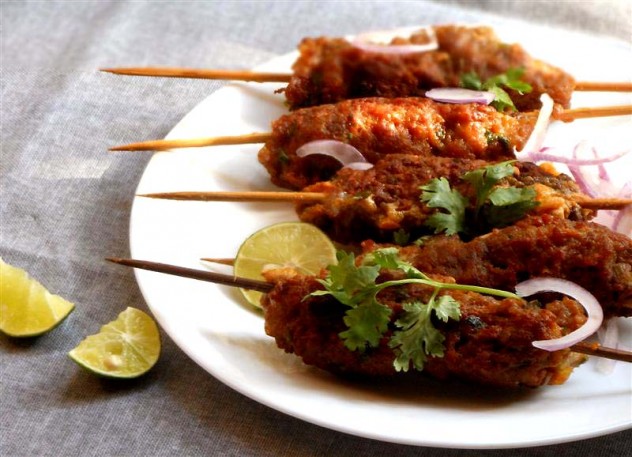
Seekh Kebab
From the arid planes of Central Asia, the kebab traveled to many a foreign land – to Europe, Asia, Africa, Australia and the Americas – mutating all along, absorbing and permeating local flavors. Depending on availability and local tastes, the traditional lamb was often substituted with beef, poultry, paneer (a fresh, unaged and non-melting variety of cheese used widely in South Asia) and even fruits!
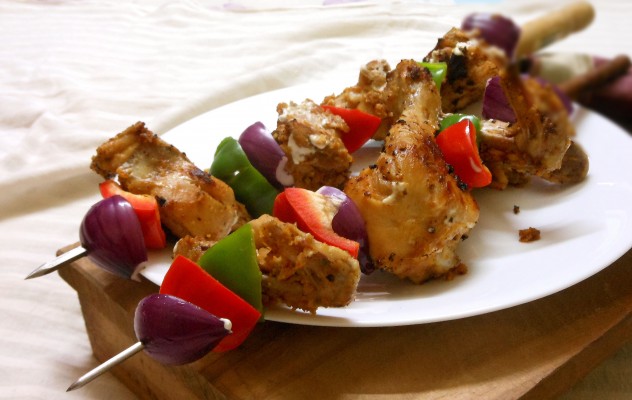
Murg Malai Kebab
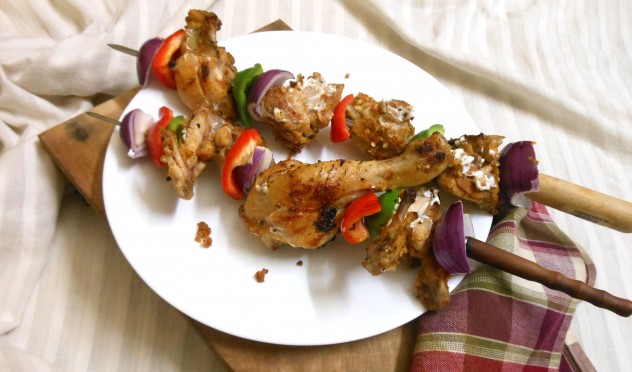
Besides maturing into a cornucopia of flavors, the 'chunks' of meat in the skewer also underwent a shift in form. The Turkish Döner kebab (from the Turkish "dondurmek" meaning a "rotating roast"), for instance. Here, the roasted meat, which was sliced off in shavings from a gyrating rotisserie and served as sandwiches (Döner Sandwiches) or wrapped in pita bread, only remotely resembled the archetypal kebab. The inventor of (the modern version of ) the Döner, Mahmut Aygün, was a Turkish immigrant in Berlin who took the glory of takeaway German street-food to new heights in the form of the Döner kebab. Little wonder Aygün was popularly known as the "kebab king" – the man who swimmingly braved the (seemingly) invulnerable imperium of the 'Bratwurst' right in the heart of Deutschland!
Like the Döner, the Peshawari Chapli (from the Pashto word "Chaprikh" meaning "flat") kebab – made of ground meat and spices – marks a shift from convention. The Chapli is shaped like a patty – flat and round – and is deep fried.
Legend has it that the Galouti or Galawati (melt-in-the-mouth) kebab that originated in Lucknow (India's kebab capital) was invented at the behest of an ageing toothless king with an undying penchant for kebabs. The king, as the story goes, was unable to chew meat owing to his toothlessness and ordered the master chef to create a kebab so soft that it would melt in the mouth! And, lo and behold! The master chef created the Galouti – the original version of which was famed to comprise as many as 160 spices! One-hundred-and-sixty, yes!!
According to another version of the legend, the ageing king organized a contest promising royal patronage to the maker of the softest and the most succulent kebab. A one-arm kebab-maker, Haji Murad Ali, was the winner. Hence the name Tunday (from the Urdu "tunday" meaning "one without an arm") kebab. The original recipe is of course fiercely guarded by the legendary chef's progeny. Sigh!
I am not exactly a Galouti aficionado – the liquescent patty being far too overwhelming for my taste. It flows like an indulgent mellifluous note – a little too inordinate, a little too boundless. Biting into its sheer texture is like sinking your teeth into a diaphanous labyrinth of flavors – you tend to lose your way all too easily!
On the other hand, I love the sinewy sapidity of the seekh kebab – the robust, full-bodied piquancy – the concentrated vigor of spices – the quickening of the senses…
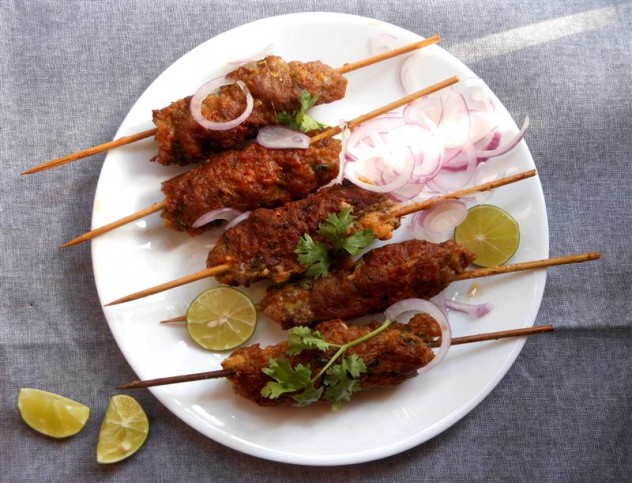
Like all other kebabs with several local variations, the Seekh kebab, too, has evolved over time. It may be prepared with minced beef, lamb, poultry and the like; it may be fried or grilled or smoked – depending on personal tastes and preferences. I, for myself, prefer grilling my Seekh kebabs on a hot griddle. Here's my RECIPE:
You'll need:
1. 500 gms mutton, very finely minced (yields about 10-12 kebabs)
2. 1 large coarsely chopped onion
3. 1 tsp freshly ground garlic
4. 1/2 tsp saunth/ dry ginger
5. 1 tsp coriander powder
6. 1 tbsp tandoori masala
7. 2 tsp red chilli powder
8. 1-2 tbsp lightly roated gram flour
9. 1 cup finely chopped cilantro
10. A pinch of nutmeg
11. 1 tsp freshly ground cinnamon clove and green cardamom in the ratio 3:1:2
12. Salt to taste
13. Butter/ Vegetable oil for basting
14. 10-12 wooden skewers (soaked in cold water for about 2-3 hours)
Knead the minced meat (drain well; there shouldn't be any moisture) with all the ingredients listed above except the butter in a deep, heat-proof bowl. The dough should not be soggy. If it feels wetter than expected, add a little more gram flour to make it firm. Next, add a small piece of burning charcoal to the kneaded meat in the bowl. Keep covered,leaving it aside for about 10 minutes. This will lend a nice smoky flavor to the kebabs. Next, shape the dough into balls and mould around the skewers. Grill the kebabs on a hot griddle, basting occasionally with the butter until the meat is cooked.
Serve hot, garnished with lemon wedges and julienned onions.
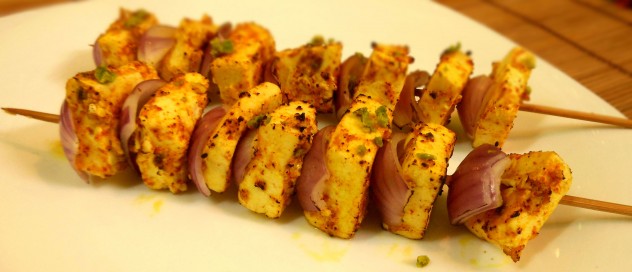
Paneer Malai Kebab
For vegans, paneer proves to be an excellent substitute for meat. Its subtle flavor slowly works on the senses like a straying note of music quivering in the still air long after the lute has fallen silent. The paneer malai kebab would also appeal to the lover of all things mild.
Here's a RECIPE:
For the Paneer Malai Kebab, you'll need:
1. 500 gms paneer cut into 4 cm cubes.
2. 100 gms thick yogurt or hung curd of full-fat milk
3. 1/2 tsp freshly-ground garlic
4. 1/2 tsp freshly-ground ginger
5. 1/3 tsp freshly-ground green chilli
6. 1 tbsp cashew paste
7. A few strands of saffron soaked in 1 tbsp warm milk
8. A pinch of nutmeg
9. Salt to taste
10. Butter/ Vegetable oil for basting
11. A few ooden skewers (soaked in cold water for about 2-3 hours)
12. 1 tbsp pistachio (shelled) paste; set this aside for later use & 2 tbsp heavy full-fat cream
Marinade the paneer with ingredients #2 through #9 overnight in the fridge. Skewer the paneer cubes, alternately threading with the veggies of your choice (onion, bell-peppers etc.). Grill on a very hot griddle, basting liberally as you proceed. When the kebabs are nearly done, brush with the cream and pistachio paste and roast (for about 30 seconds) right over the open flame of the gas stove.
Sprinkle with lemon juice and serve (immediately) with julienned onions and mint chutney.
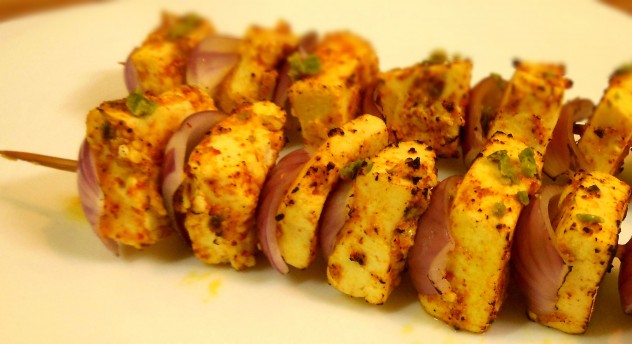
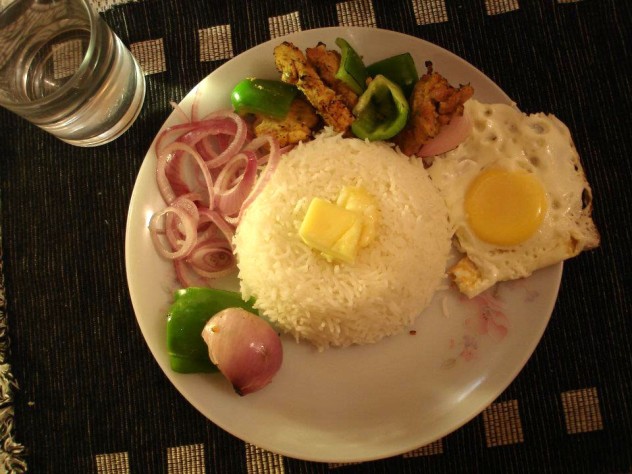
Chelo Kebab: The National Dish of Iran – Ah Persia!
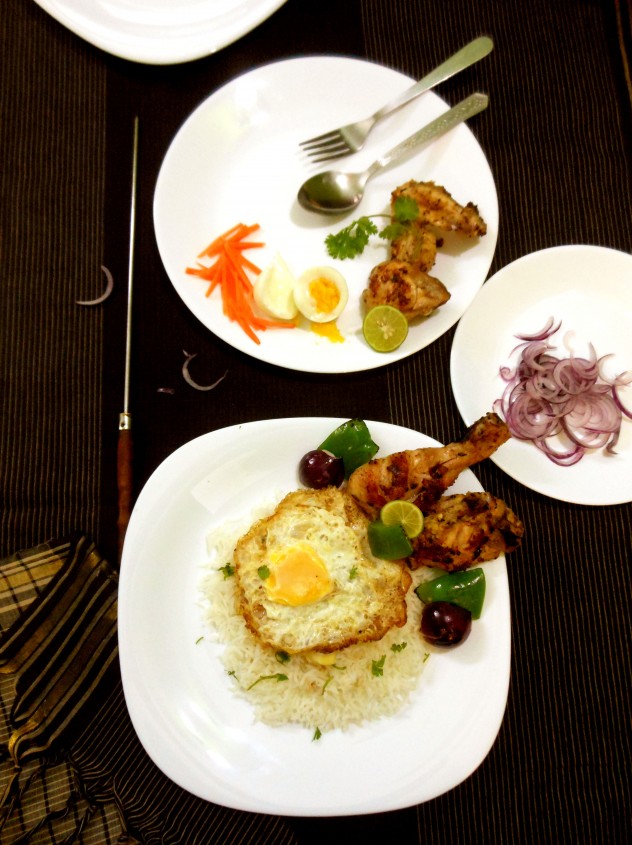

0 comments on “From the Bivouac to the High Table: The Fascinating Journey of the Kebab”Add yours →